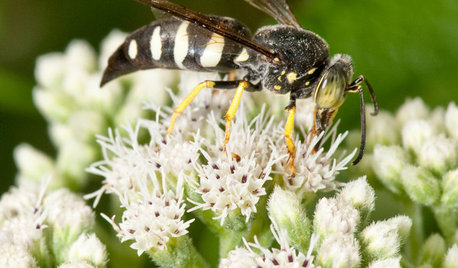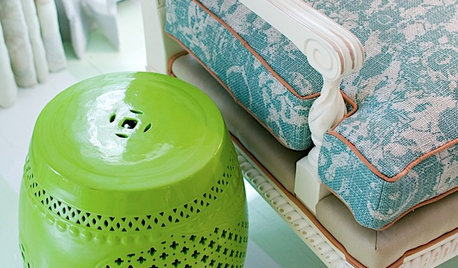New & Puzzled & Seeking Help
mistersubliminal
16 years ago
Related Stories

GARDENING AND LANDSCAPINGSeek Shelter in the Shade This Summer
Open up to outdoor living with 8 garden shade strategies
Full Story
UPHOLSTERYSeeking a Quiet, Relaxed Spot? Try Upholstering Your Walls
Upholstery can envelop an entire room, a framed panel or a single wall. See some design options and learn what to expect
Full Story
KITCHEN OF THE WEEKKitchen of the Week: Seeking Balance in Virginia
Poor flow and layout issues plagued this kitchen for a family, until an award-winning design came to the rescue
Full Story
GARDENING GUIDESSand Wasps Keep True Bugs in Check and Help Pollinate Summer Flowers
Look for these solitary wasps nesting in sandy sites and foraging on flowers in July and August
Full Story
FLOWERS AND PLANTSHelp Monarchs and Other Butterflies by Planting Common Milkweed
Summer-blooming Asclepias syriaca is an important larval host plant for the monarch butterfly and attracts a number of pollinating insects
Full Story
ORGANIZINGDo It for the Kids! A Few Routines Help a Home Run More Smoothly
Not a Naturally Organized person? These tips can help you tackle the onslaught of papers, meals, laundry — and even help you find your keys
Full Story
PETSHow to Help Your Dog Be a Good Neighbor
Good fences certainly help, but be sure to introduce your pup to the neighbors and check in from time to time
Full Story
ORGANIZINGGet the Organizing Help You Need (Finally!)
Imagine having your closet whipped into shape by someone else. That’s the power of working with a pro
Full Story
DECORATING GUIDESThe Most Helpful Furniture Piece You May Ever Own
Use it as a table, a seat, a display space, a footrest ... and indoors or out. Meet the ever-versatile Chinese garden stool
Full Story
COLORPick-a-Paint Help: How to Create a Whole-House Color Palette
Don't be daunted. With these strategies, building a cohesive palette for your entire home is less difficult than it seems
Full StorySponsored






ronalawn82
mistersubliminalOriginal Author
Related Professionals
Brooklyn Park Landscape Contractors · Ellensburg Landscape Contractors · Fair Oaks Landscape Contractors · Fruit Heights Landscape Contractors · Mission Viejo Landscape Contractors · Wareham Landscape Contractors · West Orange Landscape Contractors · Yuba City Landscape Contractors · Suisun City Landscape Contractors · Grayslake Driveway Installation & Maintenance · Milpitas Driveway Installation & Maintenance · Homestead Fence Contractors · Oro Valley Fence Contractors · Woodland Fence Contractors · Angleton Fence Contractorsdeerslayer
mistersubliminalOriginal Author
deerslayer
mistersubliminalOriginal Author
deerslayer
deerslayer
mistersubliminalOriginal Author
deepgreen